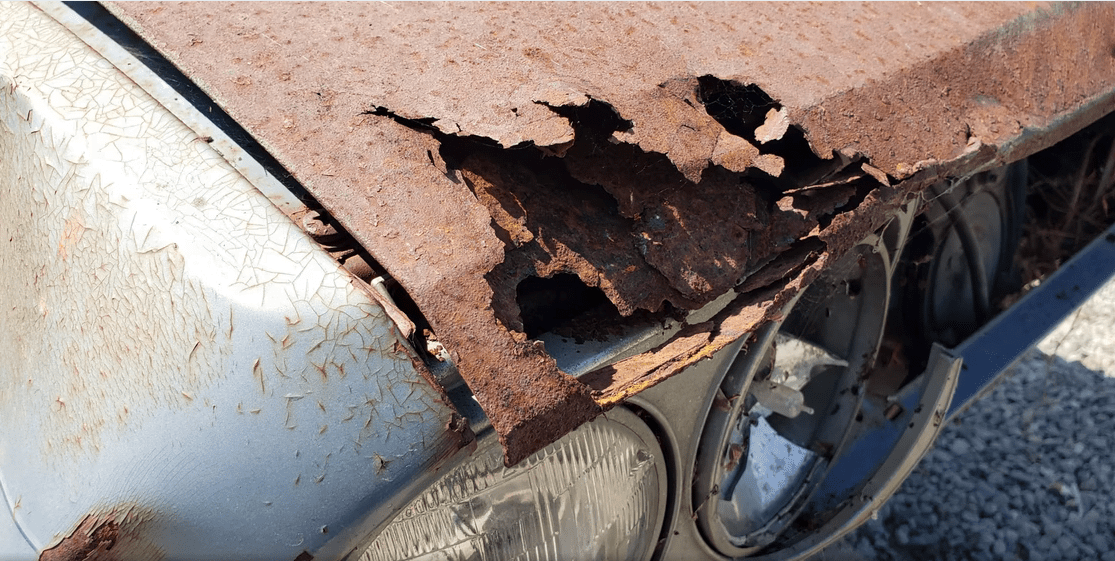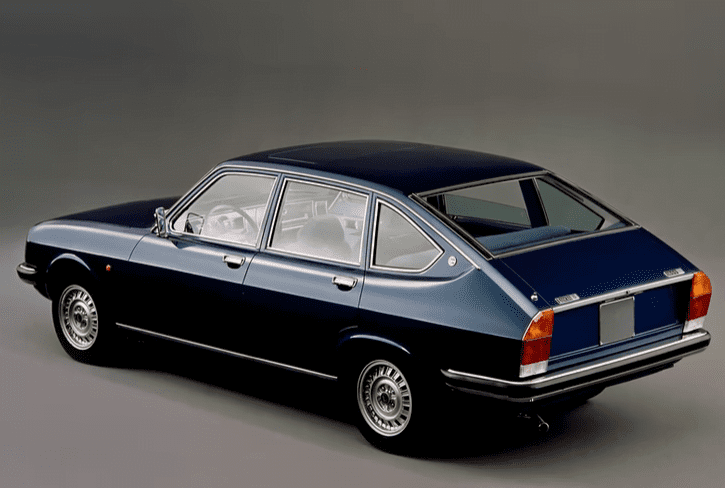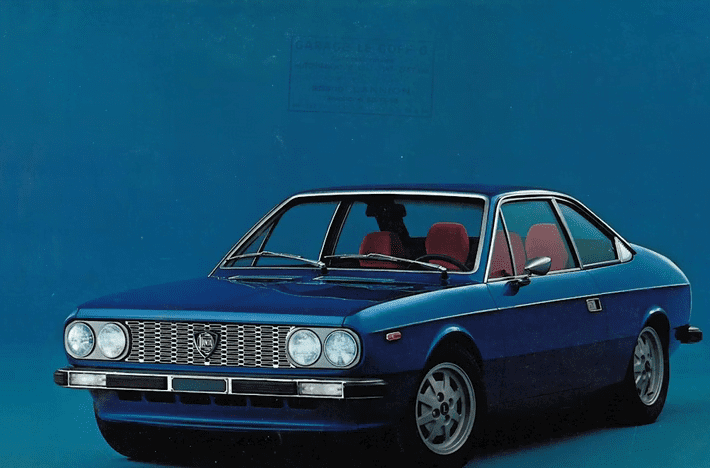2022 marks the Fiftieth Anniversary of the Lancia Beta. The car which singlehandedly crippled one of the most famous marque’s of the 20th Century.
History loves a story with a dramatic fall from grace. Downfall’s such as the catastrophic collapse of ‘Lehmann Brothers’ in 2008, or the recent bankrupting of Football League Clubs such as ‘Macclesfield’ and ‘Bury’. All serve as well documented accounts of how hundred’s of years worth of history can be torn apart at the seams. Often, these failures come down to pure circumstance or negligent management, with running a business at the forefront of everyone’s minds rather than the thought of consequences for sometimes questionable actions. In the case of Lancia however, one car can be traced back as the route to their slow demise, the Beta.
Way back in 1972, Lancia were at the forefront of rallying and the biggest manufacturer in the city of Turin. That year, they won the International Championship for Manufacturers, the early pre-cursor to what would become the WRC. Prior to that, they had been perennial front-runners in the competition with their weapon of choice, the highly successful Fulvia Coupe. It’s not an understatement to say that Lancia’s image was founded on their success in Rallying, but in the backrooms of their Turin Headquarters, things were far from successful. Lancia had been subject to a takeover by Fiat in 1969 and at that time, were a company in crisis, a wholly unprofitable venture.
Fiat had paid a single Lira (equivalent to less than ten pence in 2021) for the team, but in turn inherited a mountain of debt worth upwards of £20 million, a figure at the time that would’ve made even the most astute accountants eyes water. The Fulvia had been in production for well over six years in 1969, but had been developed to be a precision tool rather than a commercial success so there had been a scant disregard for profitability when it came to manufacturing. Concerningly, Fiat calculated the cost to build the Fulvia was in the realms of two to three times the price of any equivalent car. As a result, despite it’s success in the Corsican hills and snowy mountain passes, the Fulvia had sold poorly thanks in-part to a spot of over-engineering and a high price tag that placed it well out of reach for the average consumer.
It was clear that Lancia were effectively insolvent, in the most glorious of Italian tendencies, they existed primarily to rally, with selling cars placed on the backburner as a mere bi-product of their success. Fiat sought to resolve this problem immediately by axing the successful Fulvia and developing a car that would sell in bulk on the mass market. The problem was however, there were no replacement models lined up and Lancia’s catalogue consisted of more expensive cars like the Fulvia. So, with no money to spend on development, a crack team of engineers were assembled to bring a car to production in a relatively short timeframe of two years.
It was a herculean task, and one which was fraught with difficulty for the spearhead of the operation, Ingegnere Sergio Camuffo. The team he cobbled together struggled to design an engine block with the resources available to them, so Fiat donated their highly regarded straight-four twin-cam power plant to remove this obstacle, fortunately it was one of the most advanced four cylinder units in Europe at that time. Fiat continued to provide parts to aid development where it could, including a gearbox they had designed in conjunction with French partner, Citroen. The drivetrain was borrowed from Fiat as well, utilising the same front-wheel drive configuration they had used to great success in preceding years. Then came the chassis, which would have to be designed from scratch and subject to minimal testing whilst also being fit to be profitable, a word that Lancia engineers hadn’t been privy to in their professional careers.
S1 Lancia Beta Berlina
Despite these woes, Camuffo delivered the car within his two year deadline and the Lancia Beta was born.
Like it’s predecessors, the Beta was a pretty thing, with hallmark exterior lines and angles that had defined the brand, coupled with a practical ‘fastback’ 4-door design. Unlike it’s predecessors however, it had been designed cheaply and was designed solely to be easier to manufacturer in large quantities. The Beta debuted at the 1972 Turin Motor Show and was a popular attraction to those that drove it. Fiat had used affordable steel to construct various elements of the Beta, with all it’s sub-frame being comprised primarily of this material, this made the Beta light, coming in at around 1,000 kilograms. Due to it’s lightweight construction, the Beta was surprisingly economical, as well as a good performance car thanks to that advanced four-cylinder engine. Commentators noted that the car held the road well and the drive had plenty of that trademark Lancia character. Couple this with a comfortable ride and interior, and it was clear that the plight had been successful. The Beta saloon sold well in it’s first year and was followed up with a Coupe body in 1973 and a desirable Spider convertible two years later. The Beta would become the best selling Lancia by 1976, Fiat looked to have saved the dying brand.
However, by 1980, the bubble would catastrophically burst.
In the United Kingdom, the Beta had been a tremendous success owing to it’s competitive pricing and provenance. But, the early vehicles built between it’s inception year in 1972 and 1975 were becoming very rust-prone. The suspension sub-frame mount was found to be corroding on a vast majority of the Series 1 Beta’s, whilst some suffered from structural corrosion as well, with the gearbox and engine subframe that was pinned to the underside of the car also being subject to rust. It transpired that the cheap steel preferred by Fiat to make the Lancia profitable, was as effective as a glass hammer when it came to prolonged use. Weak and lacking in rigidity under stress, all the Beta’s subframes had been exposed to this cheap metal and the results were damning. Not only was the steel unfit for purpose, but during it’s time on the production line, the necessary safeguards had been ignored. The subframes were often left untreated, meaning no rust-proofing techniques had been utilised, this was then twinned with lengthy strikes by workers that constantly plagued the Italian car industry during the 1970’s, leading to cars of increasingly poorer quality rolling off and into the showrooms.
Defective Beta’s were subject to recall in the UK, with Lancia buying the offenders back off of their owners in exchange for brand new vehicles. By this time however, the Beta was almost a decade old and these Series 1 models were now at the point of having two or sometimes three prior owners. So now, second-hand Beta’s were being exchanged for full price replacements, a practice which severely crippled the firm financially. To add insult to injury, the rusting Beta’s were sent to the knackers yard to be crushed and scrapped, meaning no unaffected parts were recycled and thus further costs were incurred, the whole affair was a complete nightmare.
Lancia Beta Coupe Brochure c.1974
The rust problem was a PR disaster for Lancia, despite being a Fiat derived product, the badge on the bonnet did not lie. The campaign in the UK for Beta replacements was highly publicised front page news and as a result, Lancia’s reputation in the country had been demolished. Not only that, but the vast cost of replacing and scrapping rusted Beta’s had cost the firm a fortune. Despite Series 2 Beta’s having significantly improved mounting points and anti-corrosion measures in place, sales of later Lancia products such as the Thema in export markets were poor. And although the later Delta sold well based on its legendary Rally success, the writing was on the wall for the company. By 1994, Lancia had pulled out of right-hand drive and other export markets altogether.
Presently, Lancia serves as a strictly Italian based product, producing the hateful looking Ypsilon that was thankfully re-badged as a Chrysler in the UK. Most countries now speak of Lancia in hushed voices, basking in the fond nostalgia of a company that lived only to Rally. Driven by their passion for competition rather than cars in a showroom. It could be argued that the world lost a classic in the Beta, which was let down by poor production techniques with too much emphasis placed on marketability, and that Lancia’s previously uneconomical but thorough approach was probably the best course of action for the time. Ultimately however, the dying brand would’ve been put down long before legends like the 037 and the Delta came to fruition had this lack of frugality continued, which would’ve been a fate worse than death in all honesty.
The Beta then, remains a car of unfulfilled potential. One has to wonder what might’ve been had better quality means of production been used. It’s clear that the Beta was a good drivers car, even with it’s failings. Good Series 2 examples retail upwards of £10,000 now, however the rust-prone S1’s are effectively extinct in the UK thanks to their culling, a sad fate to befall an initially well-regarded piece of engineering
If anything, the Beta-rust controversy serves as a reminder of a story of corrosion that eroded the reputation of a legendary Italian marque. History always remembers failure no matter how big you are, and sometimes, decisions designed to salvage an ailing company can have the opposite effect. Fiat executives wanted to bring a car to market that would save a dying company, ironically, it was the car that signalled its downfall.



